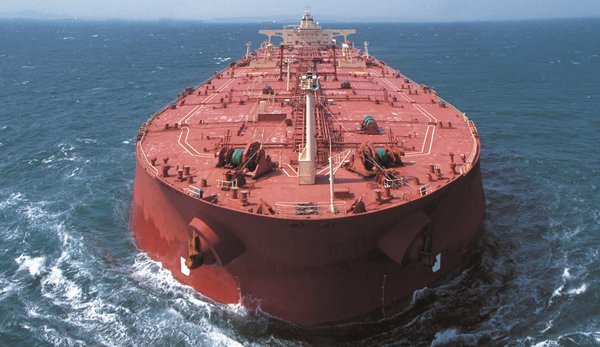Finally time to get excited about tankers?

A stunning August has owners hopeful of a belting Q4. Splash Extra assesses whether the optimism is correct.
Our strategy was right, but reality was wrong, said tanker executives about 2021. This year, reality has caught up and the long-expected upturn has finally arrived with a mid-year rally that has set equity analysts’ pulses racing.
Oil prices have moved between $92 and $104 in August, giving traders a few dollars here and there to play with. Inventories of crude and products have risen in Singapore as Asian refiners increase throughput. Products inventories in ARA particularly are growing as EU buyers seek to secure stocks before they have to cease Russian oil purchases entirely.
US crude oil exports reached a weekly record in the week to August 12 according to official data. At over 4m barrels per day throughout the month, they are well above their five-year average, driving tonne mile demand for the largest oil tankers as Asian and European buyers compete for cargoes. US crude oil stocks are, conversely, at the bottom of their five-year range following earlier releases from reserves. US crude oil imports remain steady at just over 6m bpd.
In short, there is more oil trading and refining activity in Q3 this year than there has been since Q1 2022 and the tanker chartering market has reacted accordingly.
VLCC time charter equivalent daily earnings, basis Baltic Exchange data, have improved from an average of $-11,500 in July to $9,400 in August, but this average smoothes some big movement. TD22, the US-China route, has improved from around $8,700 at the end of July to $27,200 on August 26. TD3C, from the Middle East to China, has improved from $7,400 to $36,300 over the same period while even the unloved TD1 route from the Middle East to the US Gulf has returned to positive numbers for the first time since September 2020.
The suezmax market has fared less spectacularly, with WAF-UKC rates subsiding by around 10% in August to a still healthy $32,700 or so on August 26, whereas cross-Med suezmax earnings have fallen from around $5,200 per day at the end of July to $-1,800 or so in late August. Cross-Med aframax numbers are far better but still down for August as TD19, the Baltic Exchange’s cross-Med route, shows a fall from a stellar $83,000 a day peak on July 25 to a less luminous $45,000 a day on August 26. Aframaxes in the Far East are still setting pulses racing, with Russia-China rates steady at around $90,000 a day throughout August, with limited numbers of operators willing to take the cargos. The Gulf of Mexico market remains hot with afras on the Caribs-USG run improving 78% month on month to August 26, from $24,000 to $43,000. Panamaxes on the same run are up 45% at around $56,200 a day on August 26 but they peaked at over $76,000 a day on August 11.
The Atlantic clean tanker market has been less racy in August with the Atlantic MR basket down 54% month-on-month to stand just short of $19,000 a day on August 26. But the benchmark TC1 route, from the Middle East to the Far East, added 35% over the month to stand $7 short of $58,000 a day. Rates from North Africa to the Far East were up to as TC15 added 21% to stand at $12,500 or so by the end of August. Overall the BCTI is down 3% while the BDTI is up 5% month-on-month to August 26.
Time charter rates reflect the spot markets, with VLCC one-year time charter assessments (for modern eco-tonnage) rising from around $28,000 a day at the end of July and $35,500 or thereabouts at the end of August. Suezmax one-year rates were flat at around $30,000 a day throughout August while afras were up by about $4,000 a day to $34,000 over the course of the month. MRs, despite a relatively weak Atlantic market, were fetching $28,000 a day for a one year charter at the end of August, up from $24,000 a day at the end of July.
Bearish macro-economic sentiment might still derail this rally as consumers in the West in particular face rising energy and debt servicing costs, cutting their disposable income. But so far refiners are not reporting demand destruction and refinery throughput is growing in most regions, with US utilisation said to be back in the mid-90% range as retail gasoline prices are falling from earlier peaks. Tanker market bulls feel confident that this upturn can run into the traditionally strong fourth quarter, replenishing the depleted treasuries of tanker owners after 18 months of weakness.
Like this markets commentary? Sign up for more! Published on the last Wednesday of every month and priced for as little as $200 a year, Splash Extra serves as a concise monthly snapshot, ensuring readers are on top of where the shipping markets are headed.
To access the August issue, click here. For more details on Splash Extra subscriptions, click here.
